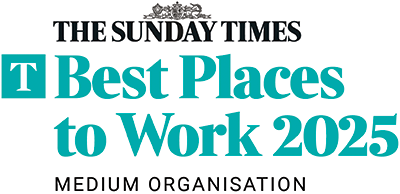For COMAH, Major Accident, High Hazard and Non-COMAH Industrial Sites
Included in this post:
- Major Hazard Board Members Need to Champion Process Safety Management. By Amanda Cockton, HM Inspector – Chemicals, Explosives & Microbiological Hazards Division. Health and Safety Executive.
- COMAH and High Hazard Sites – Are your existing systems fit for purpose? By Max Walker, Head of Onshore Chemicals Strategy & Divisional Support | Chemicals, Explosives & Microbiological Hazards Division. Health and Safety Executive.
- Climate Change Issues for Industrial Sites. By Mike Nicholas. Senior Advisor: COMAH. Environment Agency
1. Major Hazard Board Members Need to Champion Process Safety Management
By Amanda Cockton, HM Inspector of Health and Safety I Strategy Unit | Chemicals, Explosives & Microbiological Hazards Division – Health and Safety Executive
Major Hazard Leadership has been the focus of a number of inspections carried out by the Health and Safety Executive at major hazard sites across the country. Some of the key findings related to the competency of senior leaders in relation to the control of major hazards, and HSE were keen to encourage industry to:
- Have at least ONE person on the Board to be accountable for and to champion, Process Safety Management
- Ensure the board have sufficient competence in the management of major hazards, for example by undertaking the Process Safety Leadership for Executives training.
Summary of HSE’s 2021 MHL inspections – Key Outcome GAPS
The areas for improvement which were identified during the major hazard leadership inspections were grouped into a number of key themes. These are:
- Communications. Senior leaders not receiving bad news or information from front line and technical staff
- Competency. Senior leaders having no formal training in major hazards, failing to appreciate the risk profile and have a lack of awareness of financial assurance
- Roles and responsibilities. No Board accountability for process safety, a lack of clarity over who does what, plus an over reliance on safety managers
- Monitoring, audit and review. No assurance of MH performance due to insufficient use of, or inadequate KPIs, plus lack of monitoring of audit actions for overdue or unassigned actions
- Management of organisational change. Including high staff turnover, corporate takeover, staffing reductions, new systems and procedures
Reasons for inspection interventions
HSE had selected the sites for intervention based on specific criteria such as:
- Poor performance
- Senior staff turnover
- Corporate takeover
- Inspection findings of concern – e.g. Improvement Notices served
- High incident rate
- Poor corporate memory
The major hazard leadership interventions highlighted the links between poor performance on site and a lack of competency in the management of major hazards at senior leadership level. Boards should have at least one person who is accountable for process safety performance and who understands how the decisions made at board level can impact upon safety, both now and into the future.
Process Safety Leadership training is an effective way of ensuring that these boards have the right level of competency.
Any senior leader, whether it is the CEO, President or Board Member, who plays a significant role in the direction of a business, needs to understand not only what is happening on their sites and appreciate their risk profile, but they should also take accountability for their process safety management systems, workforce competency and major hazard safety on site.
This is particularly important now, as leaders make plans to review and update their sites in preparation for Net Zero.
To safeguard major hazard safety, especially when introducing changes to new systems and procedures, leaders need to ensure and evidence staff competence at all levels.
Amanda Cockton, HM Inspector of Health and Safety I Strategy Unit | Chemicals, Explosives & Microbiological Hazards Division – Health and Safety Executive and Process Safety Management Competence Programme Board member
2. COMAH and High Hazard Sites – Are your Existing Systems Fit for Purpose?
By Max Walker. H.S.E. Head of Onshore Chemicals Strategy & Divisional Support | Chemicals, Explosives & Microbiological Hazards Division.
If businesses are not putting Net Zero into their Strategy now – then they should be!
Within HM Government’s 10-point plan for Net Zero Energy Transition, there will be a significant investment of public money in carbon reduction solutions. For COMAH and High Hazard Sites, there will be a huge change in process safety technologies, along with a need to review their workforce’s competency skills.
Businesses need to build understanding about any changes and ask themselves ‘Are your existing systems fit for purpose?’ Especially if a site is adapting to Hydrogen or Carbon Capture, Utilisation and Storage, as anything that is compressed or liquefied may create more safety or environmental issues.
COMAH and High Hazard businesses also need to be addressing their workforce competence management and process safety systems compliance, ahead of the (Net Zero) curve of change – especially if they will be Repurposing or Decommissioning their assets. New entrants or innovative Net Zero solutions providers need to be aware of COMAH site compliance regulations during their development phase
Max Walker. H.S.E. Head of Onshore Chemicals Strategy & Divisional Support | Chemicals, Explosives & Microbiological Hazards Division.
3. Climate Change Issues for Industrial Sites
by Mike Nicholas. Environment Agency. Senior Advisor: COMAH
With climate change impacts threatening lives, livelihoods and businesses it is a case of ADAPT or DIE.
Process Safety and Senior Leaders of industrial infrastructure need to maintain a chronic sense of unease when managing both new and aging plants, process safety and environmental protection. This is management of change thinking from a perspective that has generally not previously been considered.
Industrial site Leadership needs to review their management systems – in particular management of change of external/natural threats, such as increasing frequency and severity of extreme weather events or sea level rise – and ask themselves the question ‘Does your organisation have the systems, skills and competencies required to manage climate relevant risks and opportunities?’
The next five years are crucial – businesses need to develop adaptive planning within their corporate and process safety management systems. Be aware of: Climate Change EA 2025 and Adapting to climate change: Environmental permit guidance and assess climate risks to safety, the environment or indeed the business. Where risks are significant, they should plan to ADAPT to SURVIVE. This can be achieved by modifying management systems to adopt the standards of ISO 14090:2019 Adaptation to climate change — Principles, requirements and guidelines.
Mike Nicholas. Environment Agency. Senior Advisor: COMAH







